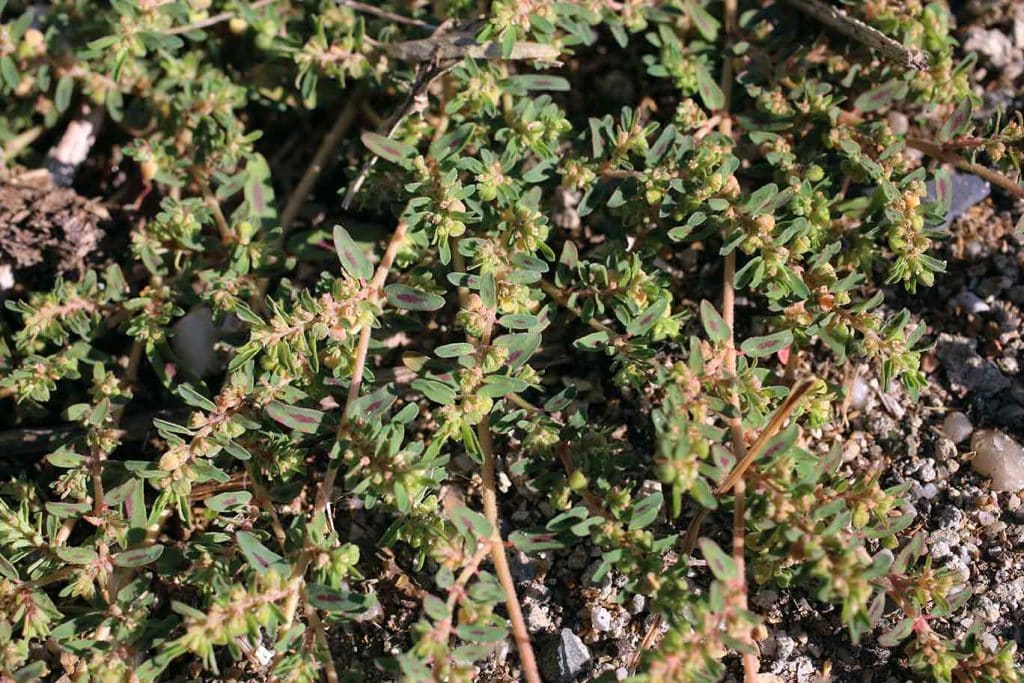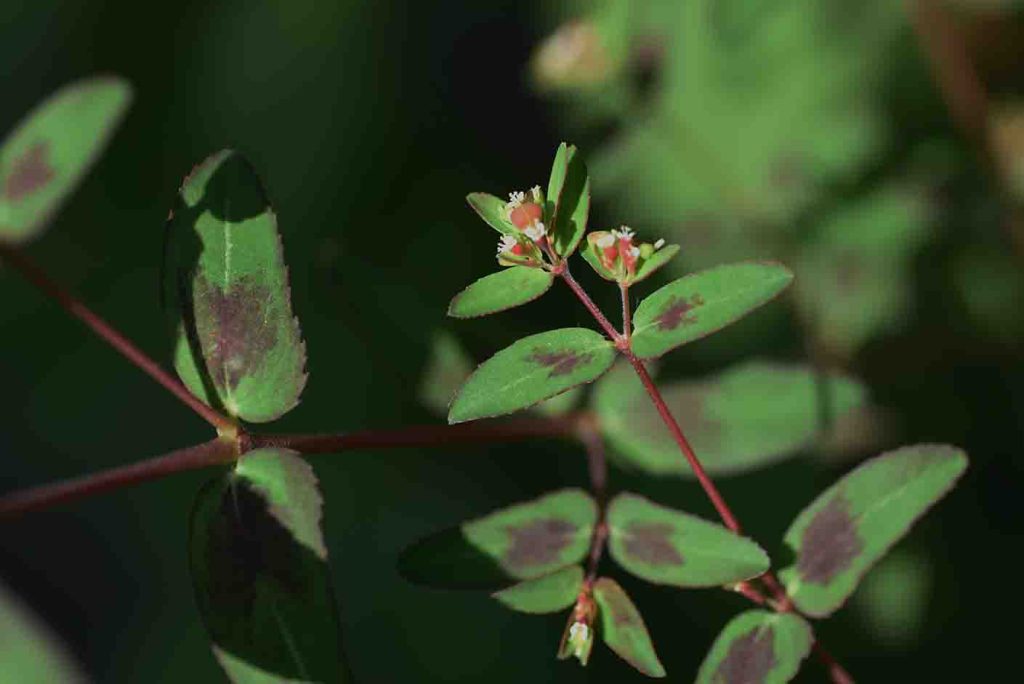Spotted spurge, scientifically known as Euphorbia maculata, is a common annual weed often found in lawns, gardens, and disturbed areas. Originally native to North America, it has spread to various parts of the world. This small plant typically grows to about 12 inches in height, with low-lying stems. Its distinctive feature is its small oval leaves, which have a noticeable reddish spot at the center. During the spring and summer, it produces inconspicuous greenish flowers.
Identifying spotted spurge is relatively straightforward, but managing it can be quite a challenge. This weed produces a large number of seeds, and these seeds can remain viable in the soil for extended periods. Spotted spurge is also highly adaptable to various environmental conditions, including heat, drought, and poor soils. It can become a nuisance in lawns and gardens by competing with other plants for water and nutrients, making regular maintenance more difficult. Additionally, its sap can be irritating to the skin and eyes, posing potential health concerns.
Identifying Spotted Spurge

Distinguishing spotted spurge from other spurge species may be a bit tricky, but some distinctive characteristics can help you identify it correctly. Here are the key features of spotted spurge:
- Growth Habit: Spotted spurge grows close to the ground, with its stems spreading horizontally.
- Leaves: The leaves of Spotted spurge are small and oval-shaped, and they have a conspicuous reddish spot at their center.
- Flowers: Spotted spurge blooms with petite, greenish flowers during the spring and summer months.
- Stems: Its stems are both hairy and reddish in color.
- Sap: Spotted spurge produces a milky sap that can cause skin and eye irritation.
If you are still determining the identity of a particular plant, it's a good idea to take a photograph and seek professional assistance for accurate identification.
Life Cycle Of Spotted Spurge

Spotted spurge follows a summer annual life cycle, which means it begins its growth in the spring or early summer, blossoms throughout the summer, and yields seeds in the fall. These seeds stay in the soil over the winter and sprout in the following spring.
Here's an overview of spotted spurge's life cycle:
- Seed Germination: Spotted spurge seeds start to sprout in the spring or early summer when temperatures reach at least 60 degrees Fahrenheit. They can germinate in various soil conditions but thrive in moist, well-drained soil.
- Seedling Growth: The seedlings of spotted spurge grow rapidly and can reach heights of up to 6 inches within a few weeks. Initially, they have a pair of cotyledon leaves, followed by true leaves that are oval-shaped with a reddish spot at the center.
- Vegetative Growth: Spotted spurge plants continue to grow and spread during the summer. Their stems remain close to the ground, extending up to 3 feet in length. Leaves are arranged oppositely along the stems.
- Flowering & Fruiting: Spotted spurge commences flowering in the summer and continues to do so until fall. The flowers are small and greenish, yielding small brown seeds.
- Seed Dispersal: Spotted spurge seeds are dispersed through various means, including wind, water, animals, or disturbances in the soil during activities like cultivation.
- Seed Dormancy: In the fall, the seeds go dormant, residing in the soil over the winter. Remarkably, these seeds can remain viable in the soil for up to seven years.
Spotted spurge is a prolific seed producer, with a single plant capable of generating several thousand seeds. This prolific seed production makes controlling spotted spurge a formidable challenge, as even a small infestation can rapidly expand.
Controlling & Managing Spotted Spurge

Managing and controlling spotted spurge requires a systematic approach. Some common methods include:
- Hand-Weeding: For small infestations, hand-weeding is effective. Ensure you remove the entire plant, including the roots, to prevent regrowth. Wearing gloves is essential to protect your skin from the irritating sap.
- Mowing: Regular mowing can prevent spotted spurge from flowering and producing seeds. However, mowing alone won't eliminate it entirely since the roots remain alive underground.
- Herbicides: Herbicides can be effective, but they should be a last resort, only considered after other methods have failed. There are two main types: contact herbicides, which kill the plant tissue they touch, and systemic herbicides, which are absorbed by the plant and travel throughout to kill the roots.
Alongside these methods, specific cultural practices can help reduce the number of spotted spurge plants in your lawn or garden:
- Fertilize Your Lawn: A well-fed lawn is less vulnerable to spotted spurge. Regular fertilization keeps your lawn thick and robust.
- Regularly Water Your Lawn: Spotted spurge is more likely to grow in dry conditions. Consistent watering can prevent its germination and maintain your lawn's health.
- Mulching: Applying mulch around your plants can prevent spotted spurge seeds from sprouting and hinder seedlings from emerging.
For substantial spotted spurge infestations, consider a combination of methods. For example, regularly mow to prevent flowering and seed production, followed by hand-weeding any remaining plants. Alternatively, apply a systemic herbicide in the fall and then mulch the area to prevent seed germination in the spring.
Additional tips for effective control and management:
- Early Identification: The sooner you identify and treat spotted spurge, the easier it is to control.
- Prevent Spread: Clean tools and equipment used in areas with spotted spurge to avoid spreading its seeds.
- Patience & Persistence: Complete control may take several years. Be patient and persistent in your efforts; you will eventually see results.
Spotted spurge may be a persistent foe, but armed with knowledge and the right strategies, you can effectively control and prevent its invasion. Don't let this pesky weed take over your outdoor spaces. With a proactive approach and consistent effort, you can maintain a lush, weed-free environment for years to come.
